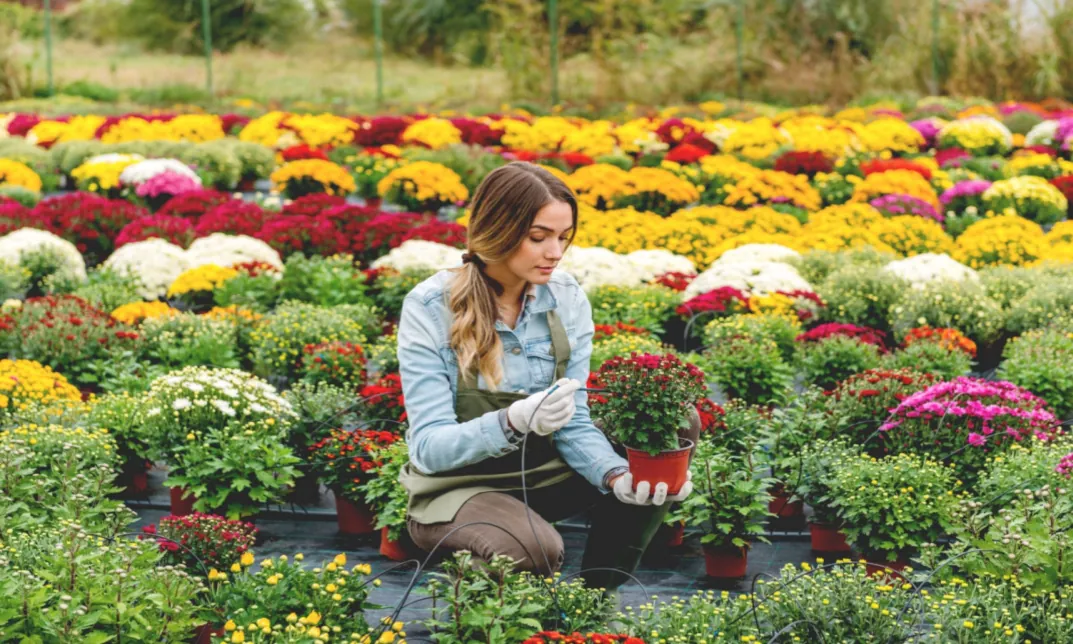Define floristry as turning flowers into beautiful and meaningful arrangements using creativity, design, and plant care. For example, it could be a small bouquet to cheer someone up or a big wedding centrepiece that impresses everyone. And actually, floristry isn’t just about flowers—it’s about adding colour, style, and feeling that people notice and enjoy.
In this guide, we’ll go through what florists do, the skills you need, how to train, the types of jobs you can get, pay, and simple steps to start your own journey. By the end, you’ll see how fun and rewarding a career in floristry can be.
Define Floristry
What Does Floristry Mean?
So, what is floristry really all about? Simply put, it’s arranging, designing, and selling flowers and plants. But actually, it’s more than just putting flowers together. Florists mix colours, textures, and scents to make great and feel special arrangements. They also think about the seasons so flowers stay fresh. Plus, floristry is part of many life moments—weddings, birthdays, funerals, or brightening someone’s home. In short, define floristry as creating something people can see, feel, and enjoy.
What Does a Florist Actually Do?
Here’s a quick look at the main tasks florists do every day:
- Make beautiful bouquets, centrepieces, and special designs for weddings, funerals, parties, and other occasions.
- Help customers choose flowers that fit their mood, message, or budget.
- Keep flowers fresh by hydrating, trimming, and storing them properly.
- Mix colours, textures, shapes, and scents to create stand-out arrangements.
- Handle orders, deliveries, and payments while giving friendly and helpful customer service.
- Plan and set up displays in shops, at events, or for photos.
If you’d like to dive deeper into what floristry really involves, check out our full guide “What Is Floristry?” It explains everything properly—from floristry to career tips in simple and easy steps.
What Skills Do You Need in Floristry?
To be a great florist, you need a mix of skills. Here’s what really matters:
- Creativity: You’ll need it to make fresh, balanced, and unique arrangements.
- Attention to detail: Small things like wiring, taping and placing stems perfectly can make a big difference.
- Customer service: You’ll help people pick flowers and ensure they feel understood and happy.
- Plant knowledge: Knowing how long flowers last, what’s in season, and how to care for them keeps them looking their best.
- Time management: Staying on schedule is key from daily orders to big events.
Where Can You Work as a Florist?
Florists have lots of options when it comes to work. For example, you could be in a flower shop, creating everyday bouquets and special orders, or helping customers and designing displays at a garden centre. You might also work at weddings, parties, or events, setting up eye-catching centrepieces. Funeral services and hotels often need florists for tributes and table decorations. And if you like flexibility, you can go freelance or even run your online flower studio. So, whether you want a steady shop job, a creative event role, or your own business, there’s a path that can fit your lifestyle.
How to Train or Study Floristry
If you’re thinking about starting a floristry career or want to get better at working with flowers, there are plenty of ways to learn.
1. Start with a Level 2 Certificate or Diploma
A Level 2 course will teach you the basics like arranging flowers, caring for them, and making simple bouquets. Many UK colleges offer these beginner-friendly courses, so you can find one that suits you easily.
2. Move Up to a Level 3 Diploma
Once you feel confident, Level 3 helps you learn advanced designs and business tips. You can study full-time or part-time depending on your schedule, which makes it flexible for different lifestyles.
3. Learn Through Apprenticeships
Apprenticeships let you work with a florist while learning on the job. This way, you gain real experience and practice your skills simultaneously.
4. Try Workshops or Online Courses
Short workshops or online courses are perfect for practising new techniques and developing portfolios. In addition, you can explore floristry courses UK to compare local and online options that suit you.
In addition, if you want a flexible way to learn, the CPD-accredited Floristry Course from the School of Health Care is affordable, flexible, and perfect for learning while you work.
After exploring training options, the next step is to see how your career can grow. This next part of this guide examines the typical path in floristry and the roles you can aim for.
What Are the Career Paths in Floristry?
Career progression in floristry usually goes: Junior Florist / Assistant → Florist Designer → Senior Florist / Manager → Freelancer / Business Owner.
Junior Florist / Assistant
As a Junior Florist, you’ll start by learning the basics. You’ll practice conditioning flowers, making simple arrangements, and helping customers. Then, as you gain confidence, you can move up to a Florist Designer role and take on bigger projects.
Florist Designer
Handling weddings, events, and consultations comes next in your journey as a Florist Designer. You’ll plan installations, create quotes, and craft arrangements that impress clients. With more experience, you can move up to a Senior Florist or Manager role.
Senior Florist / Manager
In a Senior Florist or Manager role, you’ll lead a team, manage buying, and plan displays. You’ll also oversee daily shop operations. After that, many choose to go freelance or start their own business.
Freelancer / Business Owner
As a Freelancer or Business Owner, you’ll build your brand and client base. You’ll choose your niche, run your projects, and grow your income. With time and creativity, your opportunities and earnings can expand even more.
How Much Do Florists Earn in the UK?
Florist pay in the UK can change depending on your experience, location, and work type. Junior florists or assistants usually earn around £18,000–£22,000 a year. Then, as you gain experience and become a florist designer, you can make about £25,000–£30,000 annually. Senior florists or managers, especially in big cities like London, can earn up to £38,800 if you move up further. Plus, freelancers and event specialists often make more, particularly during busy times like weddings or holidays.
Remember that your portfolio, reputation, and location also affect earnings, and with skill and creativity, you can grow your income over time.
Why Floristry Is More Than Just Flowers
Floristry isn’t just about putting flowers in a vase. In fact, it’s a way to share feelings. Whether you’re celebrating a wedding, saying thank you, or offering comfort, flowers can say what words sometimes can’t. Also, florists mix colours, shapes and scents to create designs that touch the heart. It’s part art, part science, and full of emotion. Ultimately, floristry brings nature and feelings together, letting people see, feel, and enjoy the message behind every arrangement.
Final Thoughts: Turn Your Passion for Flowers Into a Career
If you love working with flowers, now is the perfect time to take a small step and define floristry for yourself. First, start with an entry-level course to learn the basics. Next, help at a local shop or volunteer at event setups to get hands-on experience. Then, start a simple portfolio with photos and notes on how you made each arrangement. Finally, keep practising and experimenting. Step by step, one thoughtful arrangement at a time, you can grow your skills and turn your love for flowers into a fun and rewarding career.
Ready to start your floristry journey? Join the CPD-accredited Floristry Course at the School of Health Care and gain practical skills to create stunning floral designs
FAQs
Is floristry a form of art?
Absolutely! Floristry mixes colours, shapes, and textures to create arrangements that are not only beautiful but also meaningful.
What is the purpose of floristry?
Floristry helps people express emotions, celebrate events, and make spaces feel special with flowers.
What is the difference between florist and florist’s?
A florist is the person who arranges and sells flowers, while a florist’s refers to their shop or business.
Are flower arrangements art?
Yes! Arranging flowers is considered an art because it takes design, balance, and creativity to get it right.
What is the golden rule of floristry?
The golden rule is simple: balance colour, shape, and proportion, while keeping flowers fresh and healthy.
Are florists considered artists?
Definitely! Florists are artists because they create amazing designs that carry real emotion.




